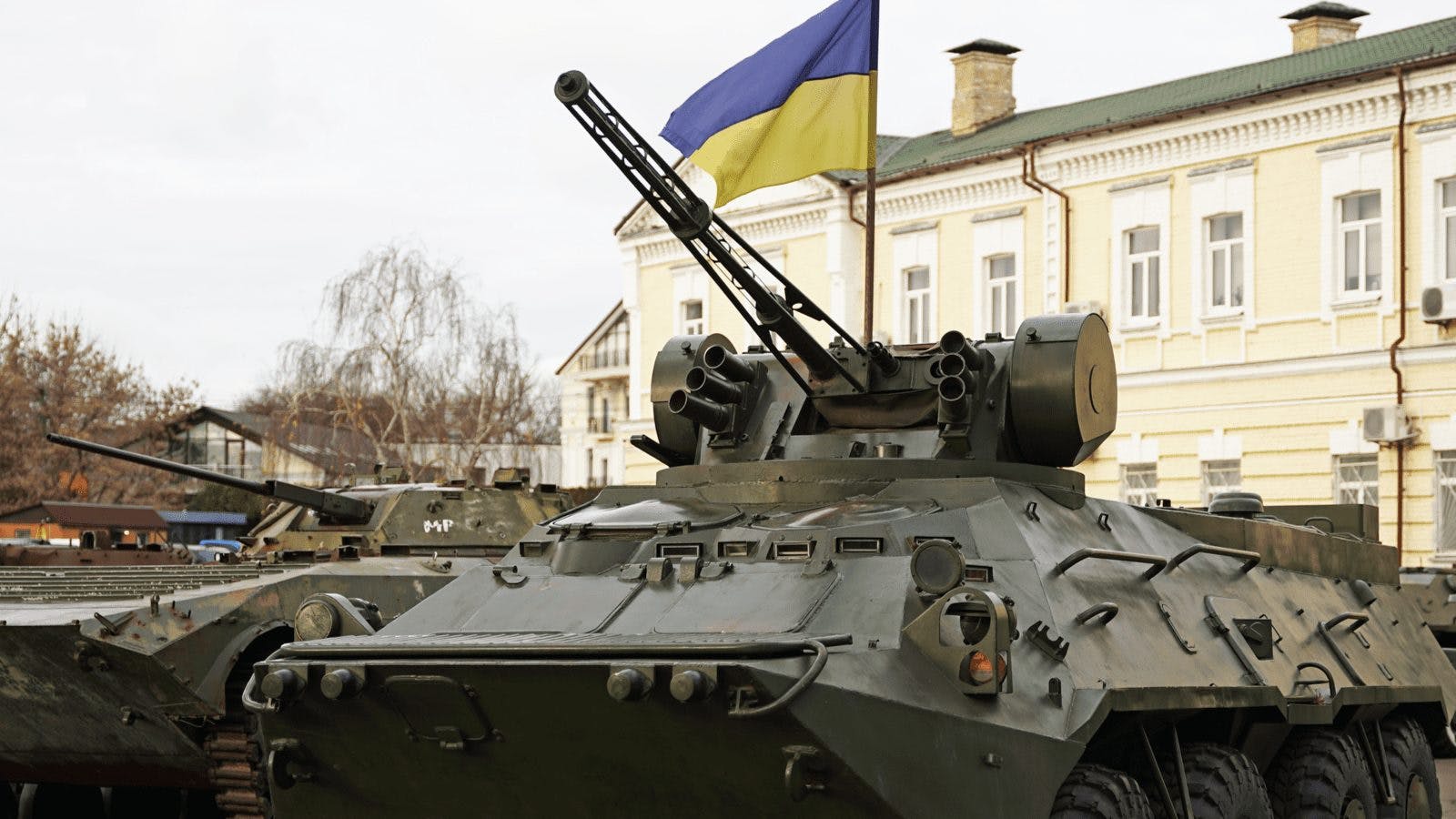Ukraine Fund Spends $54M of Crypto Donations on Military Gear
A breakdown of the costs shows unmanned aerial vehicles, computer hardware and armor vests attracted the majority of spending

An armored personnel carrier in Ukraine | Source: Shutterstock
- Around $54 million from the fund has been spent on rifle scopes, vests, helmets and tactical backpacks
- The lion’s share, around $11 million, went to unmanned aerial vehicles
One of Ukraine’s nonprofit war funds has spent $54 million of its crypto donations on military hardware as the country enters its 25th week since Russia invaded.
Vice Prime Minister of Ukraine and Minister of Digital Transformation, Mykhailo Fedorov, tweeted Thursday a breakdown of the fund’s costs on purchases made for helmets and digital rifle scopes, among other equipment.
The lion’s share, around $11 million, went to unmanned aerial vehicles, followed closely by armor vests, computer hardware and software.
“Thanks to the crypto community for support since the start of the full-scale invasion,” the minister tweeted.
Donations have been made to the nonprofit “Aid For Ukraine” which is operated by Ukraine’s Ministry of Digital Transformation. The crypto payment rails are being facilitated by crypto exchange FTX, Ukraine’s Kuna Exchange and staking provider Everstake. The fund was first set up in March.
“Despite the “bear market” crypto has become an essential tool of Ukraine’s defense providing flexibility and speed that literally saved our soldiers’ lives,” Alex Bornyakov, Ukraine’s Deputy Minister of Digital Transformation tweeted in late July. “Every ‘crypto winter’ leads to a ‘crypto spring’, but the industry is here to stay.”
Donations can be made using bitcoin, ether, USDT, solana and polkadot, among others. Funds raised are directed to humanitarian aid programs and Ukraine’s armed forces.
Crypto donations background
The crypto community — which began donating at the outset of the invasion — has so far raised more than $60 million for the fund, according to the nonprofit’s website.
Russia crossed over Ukraine’s territory on February 24 following weeks of troop build-up along the country’s borders, prompting global condemnation against Russia, including economic sanctions spearheaded by the US.
Ukraine, a crypto-friendly nation, legalized digital assets this year following Russia’s invasion with the passing of its law “On Virtual Assets” in February that was later ratified by the country’s president, Volodymyr Zelenskyy, in March.
The law set in motion a formal framework for the establishment of a legal market for digital assets and established a licensing regime and regulatory oversight. The law coincides with donations from the crypto community, said to be in the hundreds of millions.
See-sawing crypto prices have negatively impacted the overall purchasing power Ukraine requires to store up its ammunition and supplies. The country did make a separate $58 million dollar purchase before the latest major “drop” in June, Bornyakov told CoinDesk.
Get the news in your inbox. Explore Blockworks newsletters:
- The Breakdown: Decoding crypto and the markets. Daily.
- 0xResearch: Alpha in your inbox. Think like an analyst.






